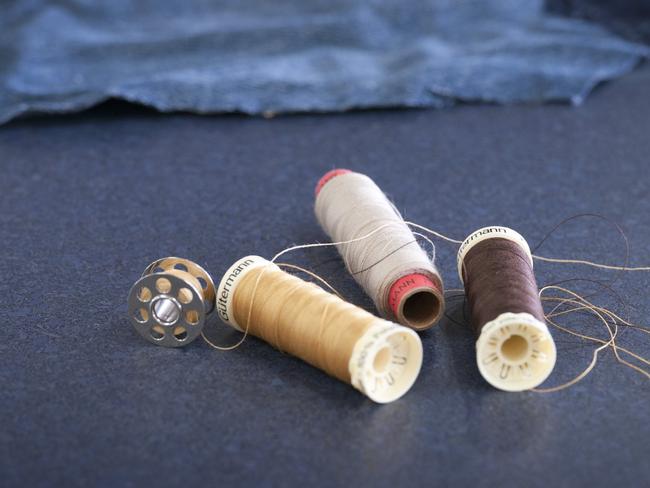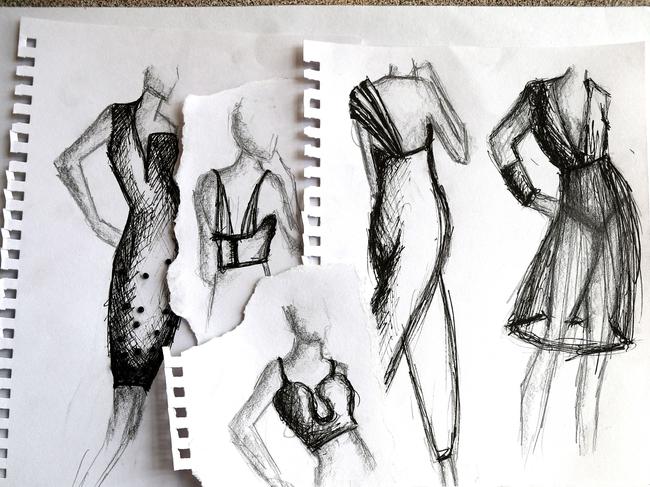How four pupils came in the top 10 in NSW for HSC textiles
Want to avoid flunking your textiles and design HSC exam? A leading expert explains what pupils should avoid — and how one very simple strategy saw one student top the state.
Education
Don't miss out on the headlines from Education. Followed categories will be added to My News.
One of the state’s leading Textiles and Design teachers has revealed the tips she shared with her class ahead of the HSC.
Redlands textile and design teacher Annabel Alan had a student top the state in the exam last year
Last year, Redlands students came first, third, sixth, and eighth in the state in 1st, 3rd, 6th and 8th in the state in Textiles and Design.
73 per cent of students last year received a band six. And the remaining students all achieved a band five.
MULTIPLE CHOICE
The technique is that I have taught them in the past two or three years and they need to use their reading time effectively for the multiple choice questions.

So I tend to tell them to mentally answer every single multiple choice question in the first 5 minutes of reading time.
They can get very good at doing this if they go to the NESA website where they can actually do multiple choice questions in a time constraint.
FINAL MULTIPLE CHOICE QUESTIONS
The last multiple choice questions, nine and 10, are targeted at discerning which students are in the top performance bands in the subjects so they are a bit trickier in their wording.
So if they do struggle I tend to tell them, answer what you know and if you do not know, mark them with a big asterisk and then come back to those questions
WHY OR WHY NOT
When students are stumped on a multiple choice question, they should use a systematic method to discern between two very similar multiple choice questions.
They should use the technique of ‘whys and whys not’? So for every single ABCD option, they need to actually write down reasons it is not the right answer because or say ‘it is the right answer because …’

So in this way they eliminate and it’s not just the 50 50 per cent chance.
Once they are done with the multiple choice quickly, they should take the next hour and 20 minute to divide themselves between the extent of response and the short answer question which frees up time.
It’s really about time management when it comes to textiles.
LONGER SECTION
After they finish the multiple choice, I tend to get them to go to the extended response which is question 14 and 15 and the end of the paper.
I get the students to do what is known as a ‘brain dump’. So looking at four key words in both questions, 14 and 15, they annotate the question and then they just do a brain dump of what they know
When they put everything they know about the topic on paper, then their mind is clear. And they are not worrying about what they should write for the extended response when they get to that.
SHORT ANSWER QUESTIONS
Reasoning is really important in textiles. So you see that it is really effective to have the strong beginning when it comes to the short answer and extended response as well.
When it comes to structuring three mark questions in this section they must define the key elements of the syllabus that the question is asking.
For example, if it asks about the decline stage of a garment like they did last year, students need the student to define what that is.
A lot of times students tend to repeat the question in their answer. But because it’s a three marker you want to get straight to the point.

EIGHT MARK QUESTIONS
So I normally ask them to write about 400 before 450 words for the eight mark question.
The introduction of normally how you tell them is 2 sentences maximum because the markers are not really looking for essay structure in this case. A student’s body paragraphs are worth the most.
They just want to know your answer on paper. At a conference I went to on teaching the subject, they have said they could even have the answer in dot points if they are running out of time.
They’re not marking the English or the grammar behind it but rather they are marking the content.
And then you have your body and for each factor in your answer, you will have a paragraph
You can just write one sentence for the conclusion.
Another thing I tell my students is they can underline key words and terminology in their eight mark question, which really helps the marker or the reader quickly grasp that the student knows what they are talking about and it links back to the question.

WHERE STUDENTS GO WRONG
Not understanding the question so they could misread, read the question, for example, instead of instead of reading the method of printing the fabric, they could go into the principles of printing the fabric
That is why we get them to underline every key point or a key word in the question and then do the brain dump in with the word.
LONGER RESPONSES
Because they have bought some time by learning to do the multiple choice extremely quickly, when they come back to the Section three, they have ample amount of time.
The guidelines say they should have about 30 minutes. But my students then have about 45 to 50 minutes on the last section when they come back to it. And so they do tend to do really well in elaborating and explaining.




